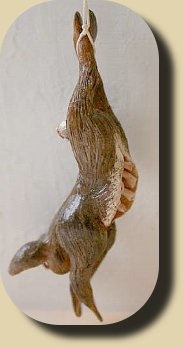
November 2010, Issue 10
The Tudors
Page 71
Continue The Tudors
 Fresh fruit was considered bad for you so they only ate it cooked and with added sugar. Damson plums and oranges were popular. Apples were stored in tubs and other fruits were preserved in syrup of wine, sugar and spice.
Fresh fruit was considered bad for you so they only ate it cooked and with added sugar. Damson plums and oranges were popular. Apples were stored in tubs and other fruits were preserved in syrup of wine, sugar and spice.
Preserved fruits, jellies and tarts were favourite desserts and marchpane was very well liked. Desserts were often presented on a bed of flowers.
The Poor
Strangely - or not so strangely when you account for modern studies of nutrition - the poor were healthier than the rich. This was mainly due to their having a diet consisting mainly of vegetables and salads. They ate their simple food from wooden dishes known as 'trenchers.'
 During the Winter months they had pottage, made from dried peas, beans and bacon scraps.
Servants in the big houses would begin their days by serving breakfast upstairs and would then breakfast themselves on bread and ale. Their bread was called 'cheat,' a much coarser, darker grain bread than the refined white bread from the tables of the rich.
During the Winter months they had pottage, made from dried peas, beans and bacon scraps.
Servants in the big houses would begin their days by serving breakfast upstairs and would then breakfast themselves on bread and ale. Their bread was called 'cheat,' a much coarser, darker grain bread than the refined white bread from the tables of the rich.
Their supper would consist of more pottage and leftovers from the tables of the rich. Anything left from their meals was offered to beggars and finally what remained was fed to the pigs.
Custom Dolls, Houses & Miniatures / CDHM







